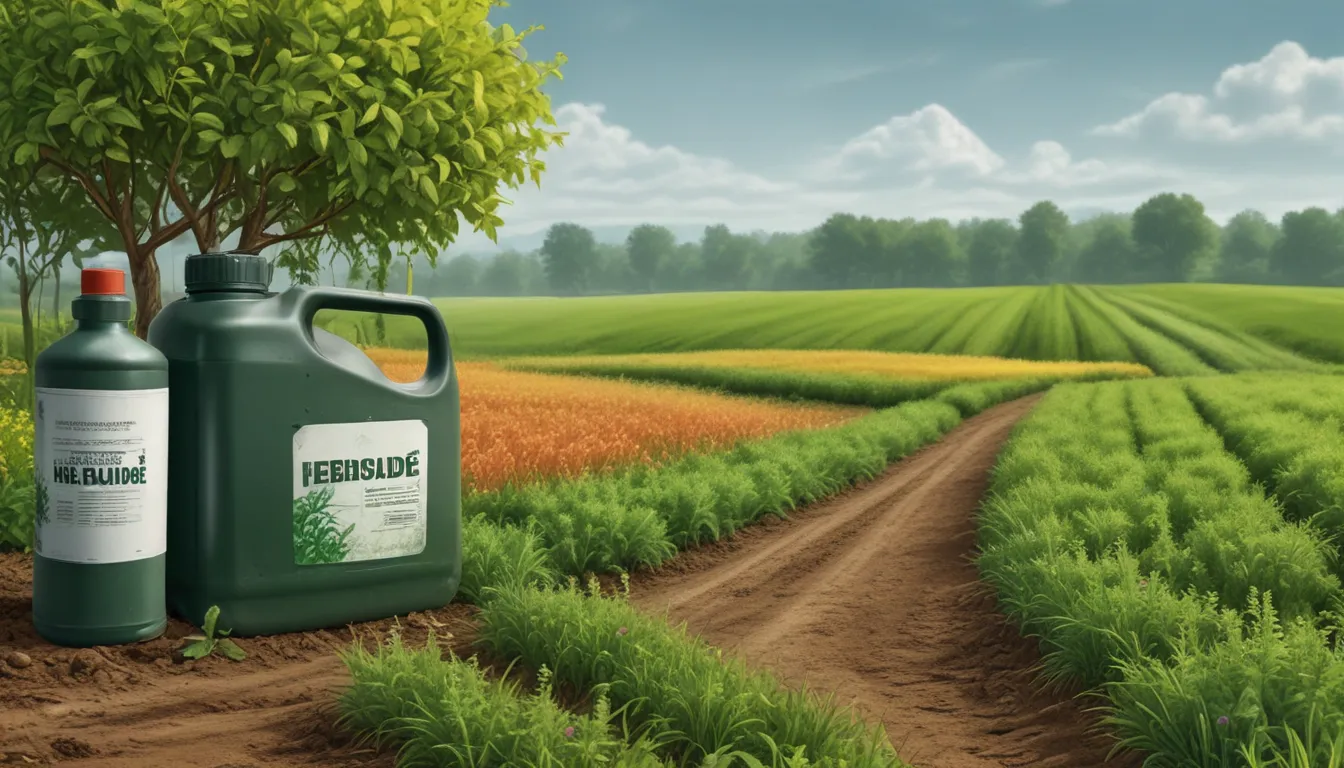A Note About Images: The images used in our articles are for illustration purposes only and may not exactly match the content. They are meant to engage readers, but the text should be relied upon for accurate information.
In the vast expanse of modern agriculture, herbicides stand as pillars of weed management and crop production. These chemical agents wield the power to control unwanted vegetation while nurturing the growth of essential crops, shaping the agricultural landscape as we know it. As farmers, researchers, and consumers alike navigate the intricate world of herbicides, understanding the depths of their science becomes paramount. Delve into this article as we explore 15 captivating facts about herbicides, unraveling their historical roots, intricate composition, versatile applications, and profound impact on agriculture and the environment. Let’s embark on a journey through the realm of herbicides, illuminating intriguing insights and dispelling common misconceptions along the way.
Unveiling the Essence of Herbicides:
- Herbicides Defined: Herbicides are chemicals strategically used to target and control unwanted plants, commonly known as weeds, in diverse settings such as agriculture, gardening, and landscaping. They come in various forms, including sprays, granules, and powders, and can be applied through methods like spraying, spreading, or injecting, selected based on the target plant species and environmental conditions.
Cultivating Agricultural Prosperity:
- Boosting Agricultural Productivity: By effectively managing weed populations, herbicides contribute significantly to increased crop yields and enhanced quality of agricultural produce. This prowess plays a pivotal role in meeting the global demand for food and catering to the needs of a burgeoning population.
The Artistry of Herbicide Classification:
- Mode of Action: Herbicides boast a diverse classification based on their mode of action, with selective herbicides targeting specific plant species while sparing desired crops. In contrast, non-selective herbicides eradicate a wide range of plant species. Additionally, herbicides are categorized based on their application timing, with pre-emergent herbicides focusing on weed seeds before germination and post-emergent herbicides combatting established weeds.
Unveiling the Heroic Glyphosate:
- Might of Glyphosate: Glyphosate emerges as a champion among herbicides, acclaimed for its efficacy in controlling a multitude of weeds across various sectors, including agriculture, forestry, and urban landscaping. Despite its prominence, debates surrounding Glyphosate underscore concerns regarding its potential impact on human health and the environment.
Nurturing Sustainability Through Herbicides:
- Eco-Friendly Practices: Herbicides play a pivotal role in sustainable agriculture by combating weed competition, conserving soil moisture, reducing soil erosion, and diminishing the need for mechanical cultivation. These practices foster sustainability in farming methods and environmental stewardship.
Combatting the Challenge of Herbicide Resistance:
- Resilience Against Resistance: The phenomenon of herbicide resistance poses a significant challenge in modern agriculture, necessitating the formulation and implementation of integrated weed management strategies to mitigate its adverse effects on crop production.
Embracing No-Till Farming Dynamics:
- Embrace of No-Till Agriculture: Herbicides have spearheaded a revolution in weed control within no-till farming systems, fostering soil health and environmental benefits such as reduced fuel consumption, lower greenhouse gas emissions, and enhanced carbon sequestration.
Unraveling Unintended Consequences:
- Consideration of Non-Target Impact: Despite their targeted nature, herbicides can inadvertently impact non-target organisms within ecosystems. This underscores the importance of judicious herbicide use and comprehensive environmental risk assessments.
Advocating Safety and Regulations:
- Upholding Stringent Standards: Herbicides fall under stringent regulations and safety standards overseen by governmental bodies and regulatory agencies. Compliance with these protocols is essential to ensure responsible herbicide application, safeguarding human health, environmental integrity, and food safety.
Evolution of Herbicide Technology:
- Technological Advancements: Over the years, herbicide technology has evolved significantly, leading to the development of more precise, effective, and environmentally friendly formulations. These innovations strive to enhance weed management practices while minimizing ecological impacts.
Public Preservation Initiatives:
- Preservation of Public Spaces: Herbicides play a critical role in preserving the functionality and aesthetics of public spaces and infrastructure, from managing weeds along roadways and railways to maintaining vegetation in parks and recreational areas.
Embracing Debates and Discussions:
- Cultivation of Dialogue: The use of herbicides has sparked discussions and controversies surrounding their potential impact on human health, wildlife, and the environment. This stimulates ongoing research, public discourse, and a deeper understanding of herbicide dynamics.
Crafting a Responsible Approach:
- Pillars of Responsibility: Herbicides necessitate responsible handling and application practices, encompassing proper training, equipment calibration, and adherence to safety protocols. These measures mitigate unintended exposure and minimize risks associated with herbicide application.
Harmonizing Herbicides with Alternatives:
- Integration of Weed Management: Integrated weed management practices such as crop rotation, cover cropping, and mechanical weed control can complement herbicide use, contributing to sustainable agriculture practices and resilience against herbicide resistance.
Embracing Herbicides as Cornerstones:
- Legacy of Herbicides: Amidst evolving agricultural practices and emerging challenges, herbicides maintain their position as indispensable tools in effectively managing weeds and optimizing crop production within modern agricultural spheres.
Conclusion: Herbicides as Pioneers of Agricultural Marvels
In conclusion, herbicides epitomize the essence of agricultural innovation, weaving a tapestry of weed management strategies and crop enhancement practices. As we unveil the breadth of herbicide knowledge, a responsible approach to their use emerges as a cornerstone of sustainable agriculture. By embracing the facts surrounding herbicides, we embark on a journey towards agricultural practices that harmonize productivity with environmental stewardship, nurturing a landscape of prosperity and balance.
FAQs: Navigating Herbicide Realms
- Environmental Impact of Herbicides: Herbicides can induce soil and water contamination, ecosystem disruptions, and harm to non-target plant species. Judicious herbicide use and alternative weed management strategies can mitigate these effects.
- Human Health Concerns: Certain herbicides may pose health risks to humans, including potential links to cancer and other health issues. Adherence to safety guidelines, regulations, and proper handling techniques is vital to minimize such risks.
An immersive dive into the world of herbicides unveils a realm of agricultural marvels and ecological dynamics. Beyond weed control, herbicides navigate a complex landscape of sustainability, responsibility, and innovation. Delve deeper, explore further, and unearth the intricate tapestry of herbicides’ impact on agriculture and the environment. Trust in our commitment to delivering valuable insights and enriching knowledge as you voyage through the transcendent realm of herbicides and agricultural enlightenment.






